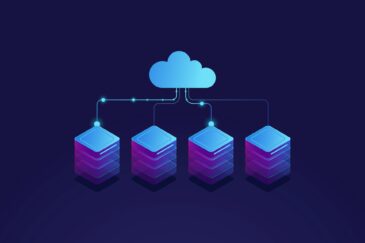How to Migrate Oracle E-Business Suite to Oracle Cloud Infrastructure

- September 26, 2023
- Jhansi Rani
- 0
Assess Your Environment
Assessing your Oracle EBS environment involves a comprehensive analysis of your existing setup. This includes understanding the modules and versions you’re using, the complexity of customizations and integrations, data volumes, and any specific dependencies. This assessment helps you know what you’re dealing with and what needs to be migrated, which is crucial for planning the migration effectively.
Plan the Migration
Planning Oracle EBS migration to OCI is a critical step that involves creating a detailed roadmap for the entire process. It includes defining clear objectives, timelines, and resource allocation. You’ll also need to identify potential risks and mitigation strategies. During this phase, you’ll decide which data and components to migrate, considering factors like data relevancy and business continuity requirements.
Prepare the OCI Environment
Before migrating data, ensure your OCI environment is ready to receive it. This involves setting up virtual machines (VMs) or other compute instances, configuring the necessary storage solutions (e.g., block storage or object storage), and establishing network connectivity between your on-premises environment and OCI. You may also need to configure security policies and access controls to safeguard your data during and after migration.
Data Migration
Application Migration
Application migration involves moving the core functionalities and configurations from your Oracle EBS to OCI. Depending on factors such as your EBS version and customizations, this step may require varying levels of effort. It often involves rewriting or reconfiguring customizations, extensions, and configurations to work seamlessly in the new OCI environment. Integration with Oracle Cloud services or reimplementing specific functionalities may also be necessary.
Customization Migration
Customization migration involves moving any custom code, extensions, or configurations in your Oracle EBS environment to OCI. This step may require adjustments and modifications to ensure these customizations are compatible with the new environment. The goal is to maintain the functionality and features essential to your business operations.
Integration Migration
This step involves the migration of integrations between your Oracle EBS and external systems to OCI. You’ll need to reconfigure or rewrite these integrations to work seamlessly with Oracle Cloud services or other applications in the OCI environment. This might involve leveraging Oracle’s integration tools and services to ensure that data flows smoothly between systems and that business processes remain uninterrupted.
Testing
Testing is a crucial phase of your project involving Oracle EBS migration to OCI. It involves thoroughly validating all aspects of the migration, including data, applications, customizations, and integrations. You should conduct functional testing to ensure that everything operates as expected, performance testing to assess system responsiveness under various loads, and security testing to identify and mitigate potential vulnerabilities. The goal is to uncover any issues or discrepancies and address them before proceeding to the final migration phase.
Backup and Disaster Recovery
Once you’ve migrated your data and applications to OCI, it’s crucial to establish robust backup and disaster recovery (DR) strategies. This involves configuring regular data backups and implementing disaster recovery mechanisms to protect against data loss and system downtime. OCI offers various backup and DR services, including automated backup solutions, storage replication, and site failover options. Ensuring data integrity and availability in case of unexpected incidents is paramount to the long-term success of your cloud deployment.
User Training and Documentation
After completing the technical aspects of the migration:
- Invest in user training and comprehensive documentation.
- Conduct training sessions to familiarize your users and IT staff with the new OCI environment and any workflow changes.
- Create user-friendly documentation that outlines procedures, best practices, and troubleshooting guidelines.
Clear communication and proper training help minimize disruptions and empower your team to make the most of the new environment.
Go Live
The “Go Live” phase is when you transition from your old Oracle EBS environment to the new OCI environment. This step requires careful planning to minimize business disruptions. During scheduled downtime, you’ll execute the migration, apply any final data synchronizations, and verify that everything is operational in the OCI environment. After successful verification, you can officially switch over to the new environment. It’s essential to have a rollback plan in case of unexpected issues during this critical phase.
Monitoring and Optimization
After the migration, continuous monitoring, and optimization of your OCI environment are essential. This step involves tracking system performance, resource utilization, and security on an ongoing basis. Use OCI monitoring and management tools to identify and address any issues that may arise proactively. Optimization efforts include adjusting resource allocations, implementing cost-saving measures, and applying security patches and updates. The goal is to ensure the long-term stability, efficiency, and security of your OCI deployment while aligning it with evolving business needs.
Decommission Old Environment
Decommissioning your old Oracle EBS environment is the final step in the migration process. This step involves safely and permanently retiring your previous environment’s hardware, software, and infrastructure. Before decommissioning, it’s crucial to verify that all data and applications have been successfully migrated and that there are no dependencies on the old environment. Ensure that all data backups and archives are securely stored and retained according to your organization’s data retention policies. Once you’re confident that the new OCI environment is fully operational and meets your business needs, you can proceed with shutting down or repurposing the old environment. This step marks the completion of the migration project and the full transition to OCI.
At Rite Software, we offer expert assistance in this transformative journey. Our lift and shift services streamline the migration, helping you reduce infrastructure costs and improve agility. We also provide ongoing support to adapt to changing business needs, allowing your IT resources to focus on more strategic tasks. With the right partners, migrating Oracle EBS to the Cloud becomes a strategic move towards a more agile and cost-efficient future. With our proven strategies, we guide you through every step of the complex Oracle EBS to OCI migration, ensuring minimal disruptions and maximum benefits.

Services
Products
Company
Copyright © 2025 Rite Software Solutions & Services LLC. All rights reserved.



